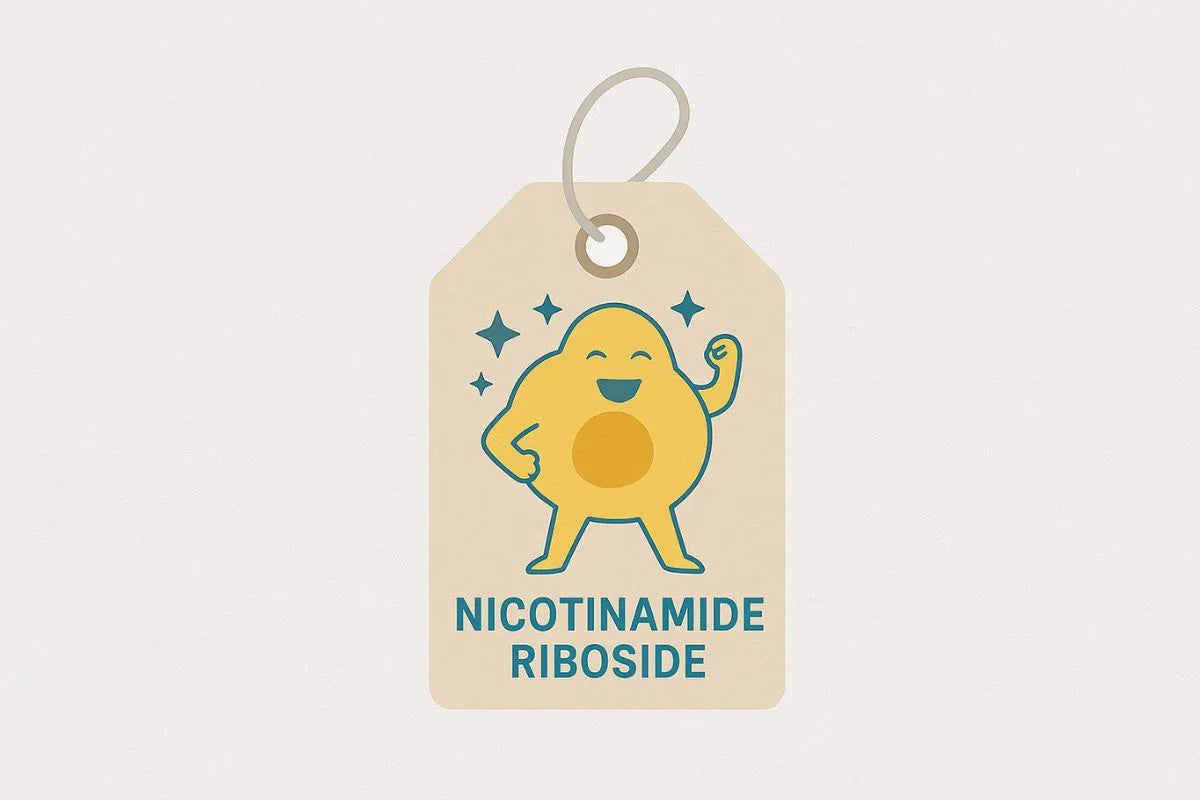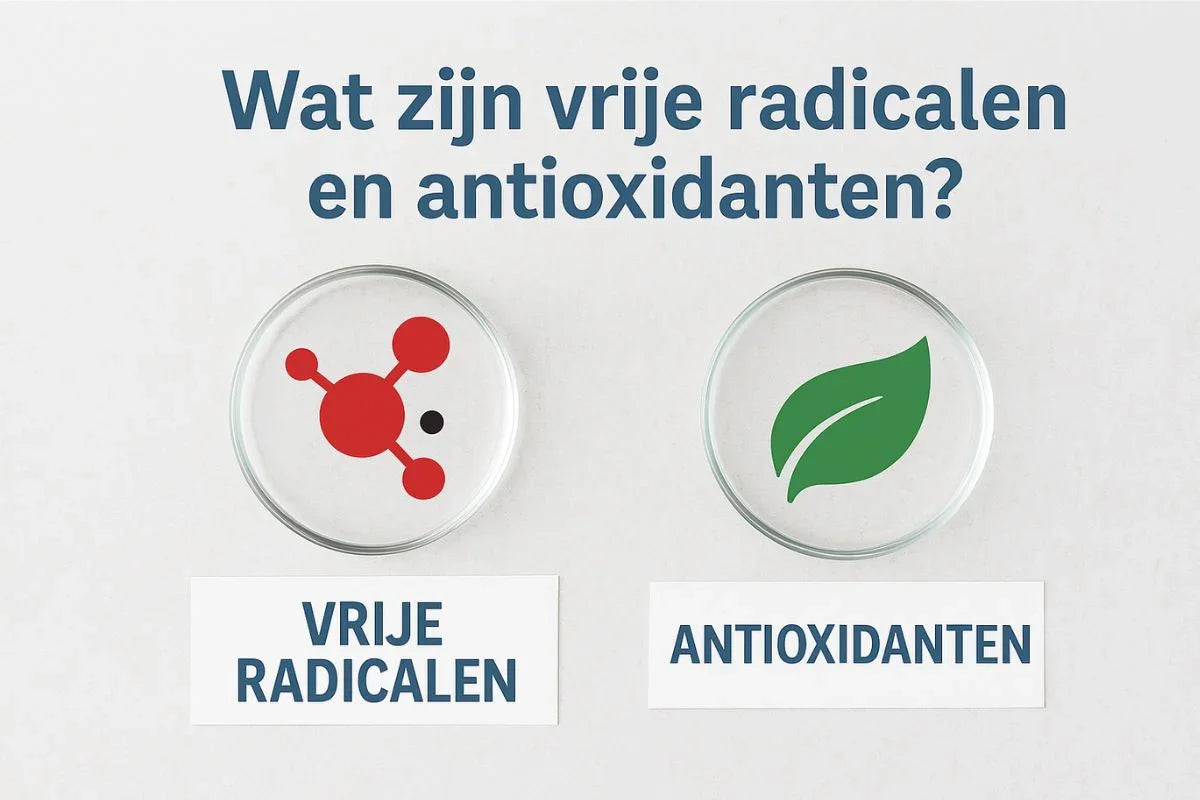
Nicotinamide Riboside: Cellular Superster!
Our metabolism as the running engine behind our energy: that is fairly common knowledge. Just as an engine needs fuel and maintenance to keep running, we also use fuel for all physiological processes in our body, and good maintenance ensures a longer lifespan. It is, of course, important to look at the quality of the fuel your body requires and the individual value of the components used to keep your metabolism running as optimally as possible. Using an isolated part of your metabolism can work as a powerful catalyst for your energy and help bodily functions run smoothly, especially as you get older. Nicotinamide riboside is such a catalyst. How exactly does it work?
Fuel for the mitochondria
Nicotinamide adenine dinucleotide (NAD) is a coenzyme that functions as an electron carrier at the cellular level. The form of NAD that does not yet carry electrons is called NAD+, and it plays a crucial role in metabolism: this coenzyme absorbs electrons from food and passes them on to the engines in the cell nucleus: the mitochondria. Mitochondria are found in almost every body cell, especially in tissues that use a lot of energy such as muscles, the heart, and the brain. The interplay of cell components in the mitochondria creates a pathway for energy from the fuel of our food and the oxygen we breathe: this is called adenosine triphosphate, or ATP. When ATP is hydrolyzed in the body, the energy is released that our cells use for virtually all physical processes. It is therefore important that the mitochondria receive enough fuel to keep cell function running smoothly.
After NAD has absorbed electrons from food, it becomes NADH. In fact, you can think of NAD as a truck that has to carry a supply. Without the empty NAD+ truck, there is also no NADH to deliver nutrients to the cells.
In addition to fueling the mitochondria, NAD has many other functions in our body. For example, NAD is involved in DNA repair and gene expression, factors that are important and become increasingly important as we age, since these processes lose strength under the influence of aging. The balance of NAD in our cells establishes a balance in the functioning and health of our body: an imbalance is associated with various physical disorders and the progression of aging.
NAD can be synthesized by some body cells from tryptophan (in animals and bacteria) and aspartic acid (plants and microorganisms). However, there are also cells that cannot do this, but still need the nucleotides of NAD. These cells use precursors of this coenzyme to convert them into NAD themselves in a process that makes optimal use of NAD: nothing is wasted! These precursors are forms of vitamin B3, also known as niacin.
About vitamin B3
Vitamin B3 is part of the B vitamin complex and was long divided into two forms, nicotinic acid and niacinamide. This vitamin is the determining factor in the production of NAD and for that reason is involved in the proper functioning of many physiological processes. For example, niacin is important for keeping skin and mucous membranes healthy, but it is also indispensable for a properly functioning nervous system, metabolism, and energy level. Even our mind benefits: vitamin B3 also contributes to mental resilience, concentration, and memory.
As mentioned, vitamin B3 was long subdivided into 2 types. Later, nicotinamide riboside was added, an analogue of vitamin B3 that was first described in 1944 as a growth factor for a bacterium that lives in blood. Later studies with a synthesized form of NR, however, revealed its special properties.
Of all the vitamin B3 forms, nicotinamide riboside is the most efficient.
Why NR?
You may wonder why you would use a precursor of Nicotinamide adenine dinucleotide if you can also supplement NAD+ itself. There are several reasons for this:
- NAD+ as a stand-alone supplement cannot be encapsulated without losing effectiveness and potency. When exposed to heat, moisture, or light, the breakdown process begins, so a stable standard under normal storage cannot be guaranteed.
- The molecular size of NAD+ is so large that it cannot pass through the cell membrane without being broken down in 3 steps. After NAD+ has been broken down into building blocks (or precursors), these pass through the cell wall to be reassembled into NAD+ inside the cell. However, every extra step required to achieve this breakdown reduces its potency.
- Research shows that during oral supplementation of NAD+, it is largely broken down into NAD precursors (such as Nicotinamide riboside) during the digestive process. As a result, very few intact NAD+ molecules reach the body’s cells for absorption, making it an inefficient process.
Since even orally ingested NAD+ is broken down into B3 vitamins before the cell absorbs it, it is more advantageous to take the latter. However, certain forms of B3 in high doses are known to cause ‘flushing’: reddening of the skin, sometimes with irritation. Another possible side effect is the suppression of sirtuins in the body; these are proteins that play an important role in gene expression.
Nicotinamide Riboside (NR), however, is a new generation of niacin that is flush-free and does not suppress sirtuins. As a natural substance, it is found in small amounts in milk and yeast products. As we age, the amount of NAD in our body decreases to such an extent that maintaining the ideal balance through natural food becomes increasingly difficult. Given the important role of Nicotinamide adenine dinucleotide in cells, supplementing with its most efficient precursors can therefore be beneficial.
NR vs. NMN
Nicotinamide Mononucleotide (NMN) is often mentioned in the same breath as Nicotinamide Riboside. That’s not surprising: both are known as precursors of NAD+. However, NMN is not a precursor of NAD+ like NR is, as it is not a form of vitamin B3. Moreover, several clinical studies on NR in humans and animals have already been conducted and published, which is not yet the case for NMN at the time of writing. Therefore, there is still no European approval to use NMN as a dietary supplement.
Nicotinamide Riboside from TRU Niagen®
The potential of nicotinamide riboside for our body was discovered in 2004 by the American doctor Charles Brenner. His research and patented NR formula, combined with Chromadex’s perfected production techniques, resulted in TRU Niagen®: a dietary supplement made with exclusively patented nicotinamide riboside. TRU Niagen® is produced under the high GMP (good manufacturing practice) standard and is recognized as safe by various authorities such as the FDA in the United States and EFSA in Europe. To this day, TRU Niagen® from Chromadex and its possible applications for human health remain the subject of (pre)clinical studies.
Clinically tested and proven, certified safe for human use, and patented: that is what TRU Niagen® stands for, and that is why it is our choice to support an energetic life.


